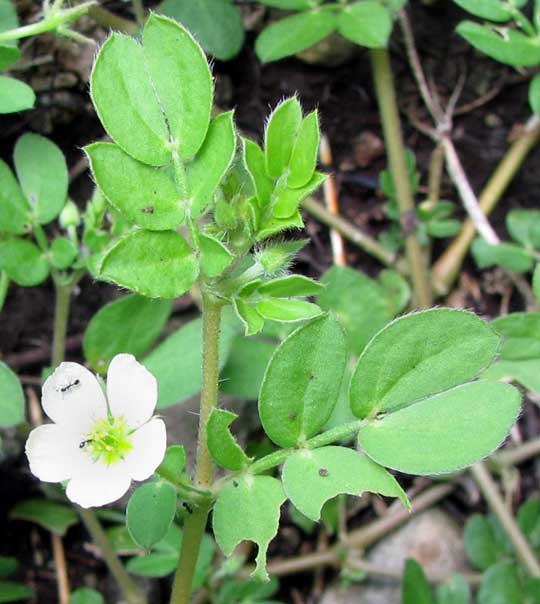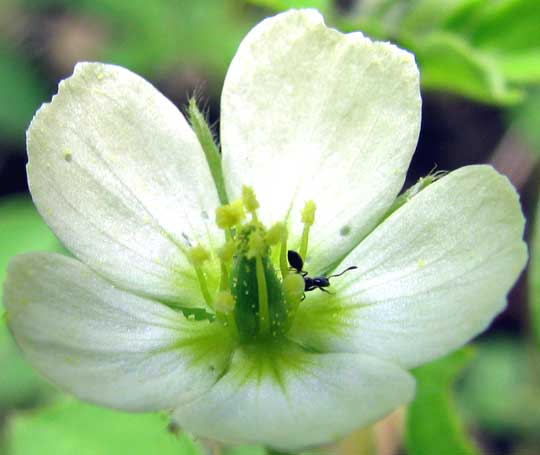Excerpts from Jim Conrad's
Naturalist Newsletter
from the August 8, 2010 Newsletter issued from Hacienda Chichen Resort beside Chichén Itzá Ruins, central Yucatán, MÉXICO; limestone bedrock, elevation ~39m (~128ft), ~N20.676°, ~W88.569°
CALTROPS FLOWERING
That word "caltrop" is a fine, old one, going back at least a thousand years. One kind of caltrop is an iron ball equipped with four spikes disposed so that when the ball lies on the ground one of the spikes always points upward. Caltrops are strewn before advancing cavalry, armored vehicles and the like. The word caltrop derives from the Old English Calcatrippe, based on the Latin "calci," referring to a spur or heel, and "trœppe," which became "trap." It's a trap for the heel.
The word also applies to various plants bearing spiny heads or fruit. One of those caltrop species is in flower here now, though not yet producing fruits, seen below:

That's Big Caltrop, KALLSTROEMIA MAXIMA, pretty common here in the partially shaded grove set aside for local Maya ceremonies. Big Caltrop's ant-attracting, yellowish-cream blossoms at first glance are uninterestingly similar to a host of other five-petaled, yellowish flowered, weedy herbs, mostly members of the Hibiscus Family, but just look at those leaves. Arising at the right of the flower is a pinnately compound leaf with six leaflets.
It's a little unusual for a pinnately compound leaf to bear an even number of leaflets, for usually there's a "terminal leaflet" arising at the tip of the leaf's rachis, making an odd leaflet number. Also, note the form of the two terminal leaflets, something like a cloven hoof. This is one of those rare times when a plant's leaves are more distinctive than the flowers. The fruits, if we had them, would be seen to be covered with blunt tubercles, not sharp spikes as the word caltrop implies.
A close-up of the flower with one of its ants is shown below:

The bumpy fruits, the odd leaves and certain slightly irregular features of the plain-looking flowers seem to have been enough to relegate Kallstroemia to a small, usually overlooked family, the Lignum Vitae Family, the Zygophyllaceae. However, recent genetic sequencing has banished several genera from the family, and called into doubt the validity of the family itself. On the Evolutionary Tree of Life, caltrops turn out to be one of those kinds of plants not really fitting on any of the major evolutionary branches, a kind of in-between evolutionary notion that hasn't led to much, or maybe it's the remnant of an older branch whose close relatives mostly died out. They used to think that Big Caltrop's Lignum Vitae Family was closely related to the Citrus Family, but now they think it's closer to the Rose Family.
Greater Caltrop occurs along the coast in the US from South Carolina to Florida, in Mexico, Central America, northern South America and the West Indies. In some places it's regarded as marginally edible, and has been receiving attention because it's reported to contain the presteroid diosgenin, which means that some would regard it as an herbal Viagra.